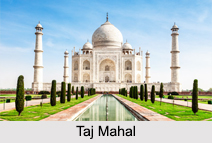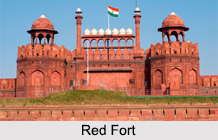 Architectures in North India constitute a major portion in the history of Indian architecture. The Northern Group includes the regions of Jammu and Kashmir and Ladakh, states of Himachal Pradesh, Punjab, Uttar Pradesh and the capital Delhi.
Architectures in North India constitute a major portion in the history of Indian architecture. The Northern Group includes the regions of Jammu and Kashmir and Ladakh, states of Himachal Pradesh, Punjab, Uttar Pradesh and the capital Delhi.
The wooden architecture of the Himalayas, Kashmir`s Islamic architecture, Ladakh`s Buddhist architecture, the Hindu architecture from Himachal Pradesh and the Islamic architecture of the Mughal era in the Gangetic planes are intertwined geographically.North India houses a galaxy of well known architectural creations. Many places like Delhi and Agra are sprinkled with several such historical and religious Indian monuments. The cultural importance related with these sites has led to their enlistment in the UNESCO World Heritage sites. The Taj Mahal and the Red Fort are examples of such types.
History of North Indian Architecture
Buddhism is one of the earliest religions which have prospered in India and Buddhist architecture is extensively found in the heartland of Jammu and Kashmir during the 3rd century B.C. under the reign of Emperor Ashoka. Buddhist monasteries are more concentrated in the Ladakh and Leh region of Kashmir. However after the advent of the Mughals there has been a steady influence of their style of architecture in Kashmir.
 The impact of Hinduism was dominant in the architecture of Himachal Pradesh. Hindu temple architecture is the major structural creation of this region. Architecture of Punjab was influenced by the Mughal architecture. Colonial architecture also has a heavy impact in this state. The capital city of Delhi has witnessed several cultures at various times in history but the impact of Islamic architecture is more prominent and after independence buildings and monuments imitated the architecture of the colonisers. The state of Uttar Pradesh is an amalgamation of Mughal and Hindu style of architecture.
The impact of Hinduism was dominant in the architecture of Himachal Pradesh. Hindu temple architecture is the major structural creation of this region. Architecture of Punjab was influenced by the Mughal architecture. Colonial architecture also has a heavy impact in this state. The capital city of Delhi has witnessed several cultures at various times in history but the impact of Islamic architecture is more prominent and after independence buildings and monuments imitated the architecture of the colonisers. The state of Uttar Pradesh is an amalgamation of Mughal and Hindu style of architecture.
Features of North Indian Architecture
The temple architecture Nagara style became popular in Northern India. It does not regularly have sophisticated boundary walls or gateways. Initial temples had only one shikhara (tower), but in the afterwards, numerous shikharas came. The garbhagriha is located directly under the tallest tower. The temple architecture Nagara style can be subdivided mainly into three - based on the shikhara type and these are - Latina/ Rekha-Prasada, Phamsana type shikhara and Valabhi type shikhara. Among the places in North India Buddhist architecture is prevalent in the Ladakh and Leh region of Jammu and Kashmir such as the Lamayuru monastery and the Rizong monastery. There is an amalgamation of cultures in Kashmir.
During the 14th century, Islam spread and mosques were being built all over. The central building of the Golden temple for example is designed in the latter Mughal style. It is open on all four sides, it does not have any doors that can be closed and does not have any dark places. The Islamic influence is most prominent in the architecture of Delhi such as the tomb of Humayun, the Red Fort, Purana Quila, and the Qutub minar. Under the reign of the Rajput king, Maharaja Sawai Jai Singh II, Delhi has witnessed some of the exquisite architectural specimens like the Jantar Mantar. Agra and Fatehpur Sikri of Uttar Pradesh are the reservoir of Islamic architecture. The prominent monuments are the Agra fort, the tomb of Itamad -Ud-Daula and the Taj Mahal. Rashtrapati Bhavan of Delhi is a classical European building with some features of Mughal architectural style.



















